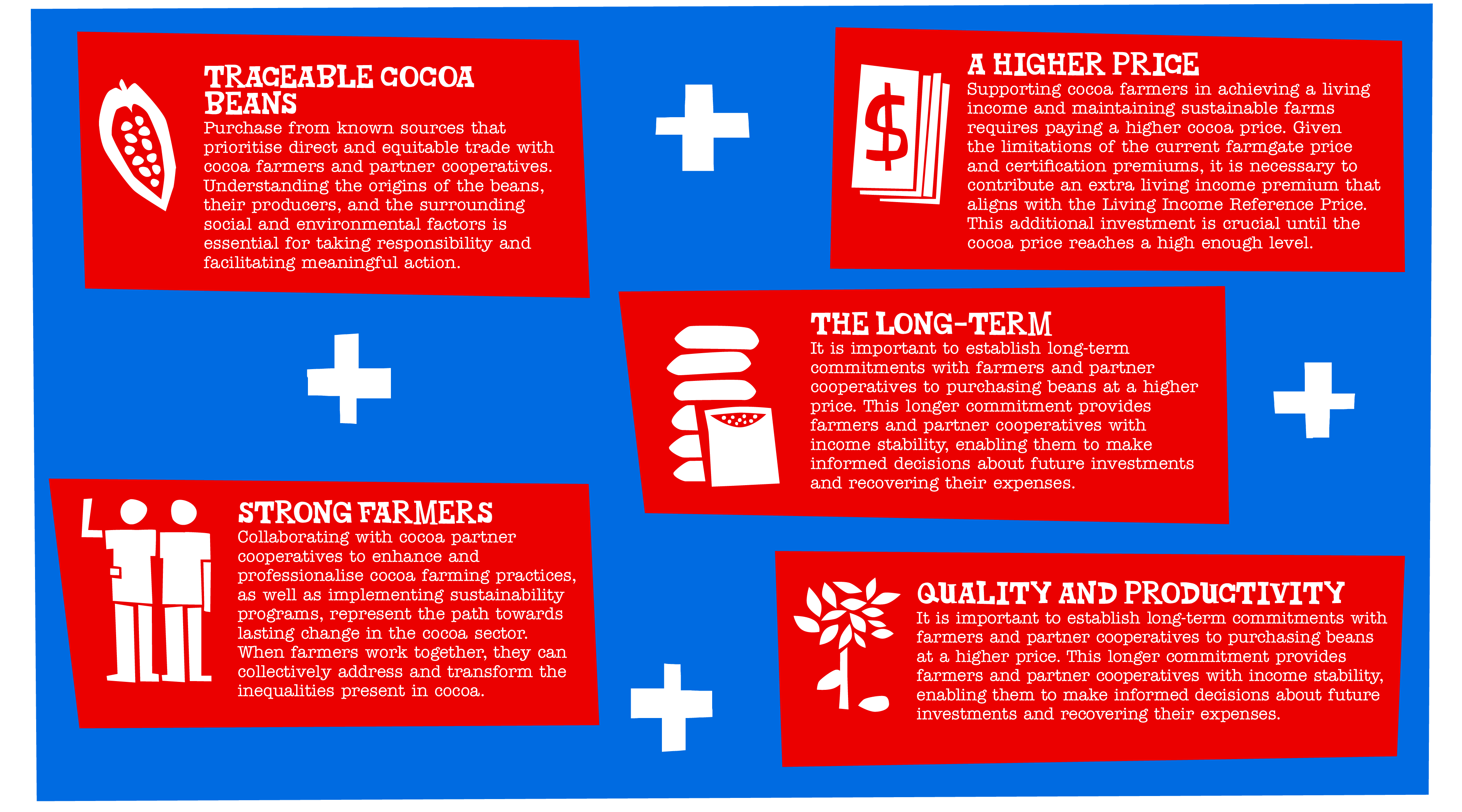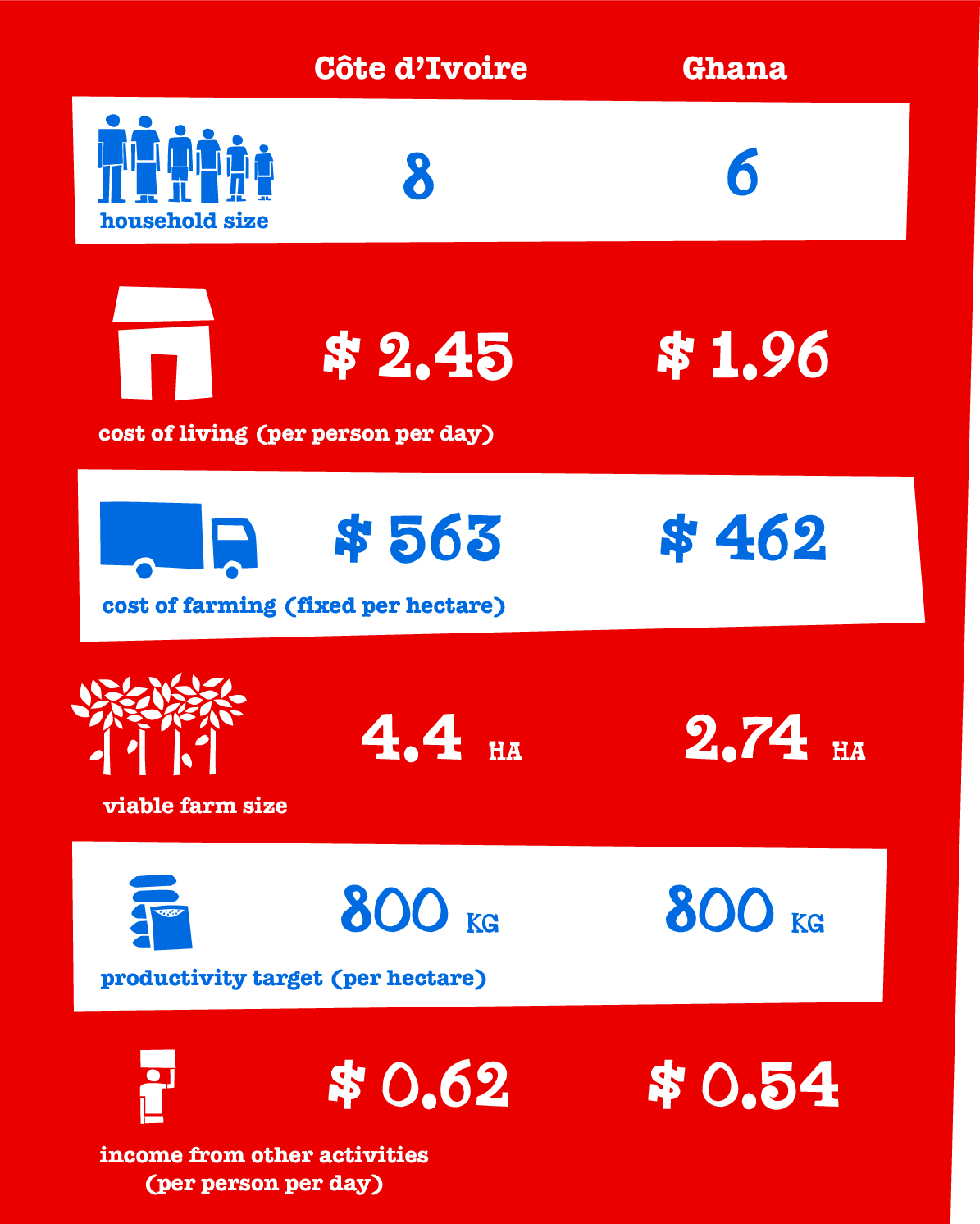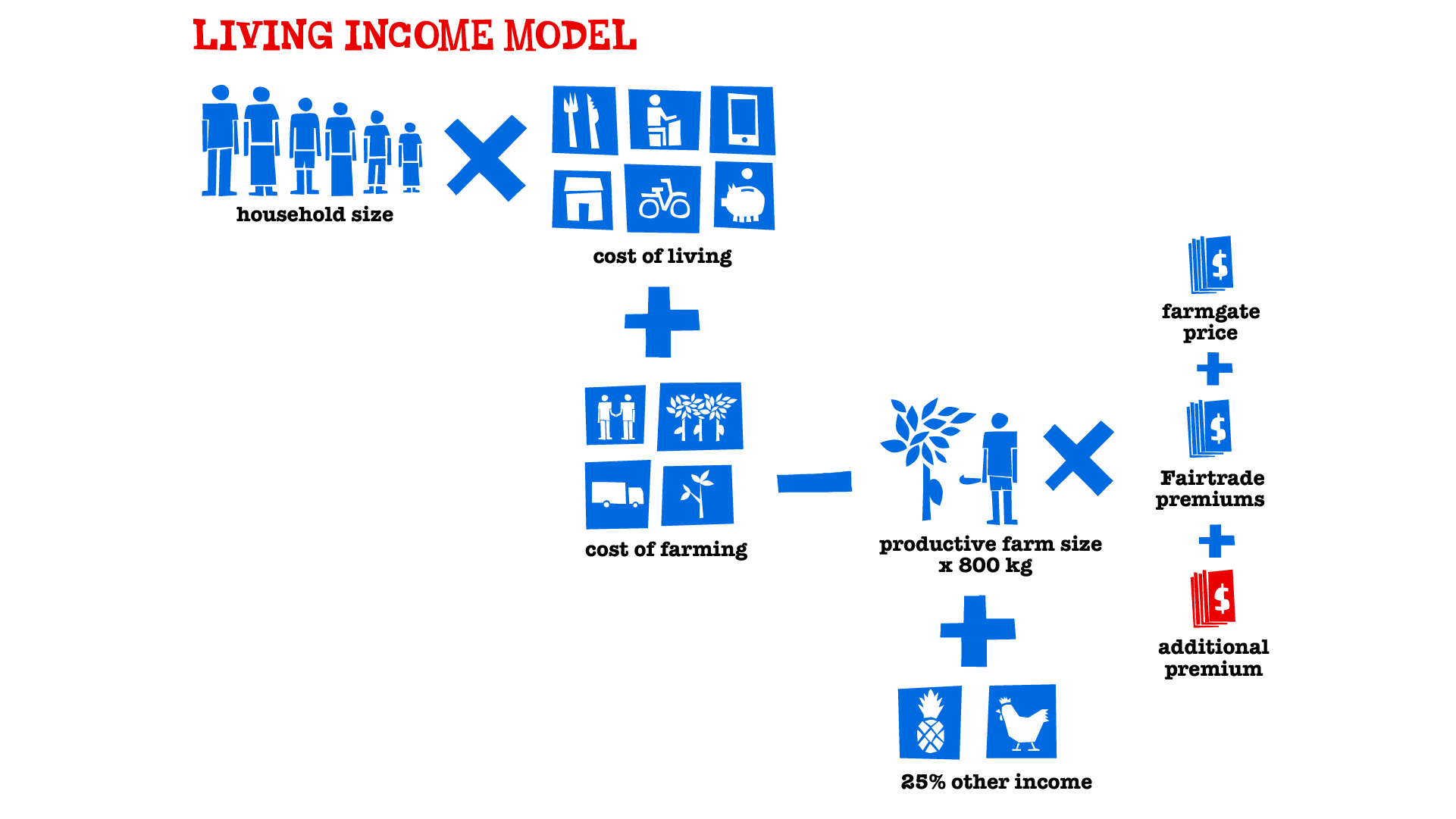Tony’s 5 Sourcing Principles are our tried-and-tested solution for ending exploitation in cocoa. Following these principles addresses poverty by enabling cocoa farmers to earn a living income. This is crucial for putting an end to forced labor, child labor and deforestation on cocoa farms in West Africa.
We believe all chocolate companies must adopt Tony’s 5 Sourcing Principles when doing business with cocoa farmers. Not 1 principle, not 2 principles but – and this is very, very important – all 5 principles are needed to change the norm in cocoa!

1. traceable cocoa beans
The beans we use for our cocoa mass and cocoa butter are 100% traceable. And we’re proud of that! There’s no anonymous ‘pile’ of beans to hide behind in our supply chain. We purchase directly from our partner cooperatives in Côte d’Ivoire and Ghana (find out more about them in our latest annual FAIR report).
All our partners keep records of their cocoa stock in BeanTracker, our digital logging system. From the plantation all the way through to storage (be it in Antwerp or Chicago): we maintain 100% transparency on the number of beans, where they are coming from and where they are going.
All our partners have access to BeanTracker. So, whenever a container arrives in the Antwerp port, the managers at our partner cooperatives know where it is. And they know that when the beans arrive, payday is just around the corner.
By working this way, we can guarantee that all the beans in all our bars come from the partner cooperatives we work with. This is what makes us (and our Mission Allies) unique! We take 100% responsibility for the beans we source.
2. a higher price
Until there is a sustainable solution for the ongoing low cocoa prices, we bridge the gap between the farmgate price (aka the price farmers are usually paid) and the Living Income Reference Price (LIRP) (aka the price they should be paid to earn a living income) pay paying premiums. These premiums consist of 2 parts: the Fairtrade premium and the additional living income premium. The additional premium is determined at the start of each cocoa season, based on the minimum farmgate price determined by the governments of Ghana and Côte d’Ivoire. When the new farmgate prices are set, we check if our farming costs and livelihood data are still correct. We then adjust our additional premium to ensure the farmers we work with are being paid a price that enables them to earn a living income.
The living income premium over the 2022/23 main-crop farmgate price was €505 per metric ton of cocoa in Côte d’Ivoire and €669 per metric ton of cocoa in Ghana. These figures are on top of the Fairtrade premium of €563 per metric ton cocoa, also paid by Tony’s in Côte d’Ivoire and €247 in Ghana. In the past year, we worked with 17,740 farmers who got paid these extra premiums.

the living income premium
So, is every farmer immediately able to escape poverty when we pay a higher price? No. It’s not that simple (for example: some farmers have income from multiple sources or sell their cocoa to other companies who don’t pay the LIRP). This is why all 5 of Tony’s 5 Sourcing Principles need to be implemented by all chocolate companies to end exploitation in cocoa. No cherry picking, remember?

3. strong farmers
Collaborating with cocoa partner cooperatives to enhance and professionalize cocoa farming practices, as well as implementing sustainability programmes, represents the path towards lasting change in the cocoa sector. When farmers work together, they can collectively address and transform the inequalities present in cocoa. Strong cooperatives have a better negotiating position and can buy fertilisers, training and equipment in bulk. We are proud of the commitment shown by the farmers we work with. In both Ghana and Côte d’Ivoire, there is a huge turnout at the annual member meetings. The halls are full! We make sure that delegates from the Tony’s Open Chain team are there too to foster direct connections and build relationships at eye level.
4. the long-term
We work with partner farmers for a minimum of 5 years. That way they know they’ll receive the living income premium for their harvest for the next few years and can invest in their farms beyond the end of next week, next month, or even the end of next year.. They can buy new cocoa plants that produce a better harvest or invest in farming equipment or training. As a result of our long-term relationships, the farmers also gain awareness of the consequences of child labor. We implement projects that address pressing issues, such as child labor and farmers’ rights.
One such initiative is the Child Labor Monitoring and Remediation System (CLMRS), which surveys the partner cooperatives and helps improve cocoa farmers’ living conditions. Because before we can talk about eliminating child labor or forced labor, we have to help ensure supportive conditions in the communities.
And by the way, our collaboration agreement contains a transparency clause. We’re happy for our partner cooperatives to share our agreement with other potential buyers. That way they can negotiate the same commitments and agreements.
5. quality & productivity
When it comes to cocoa cultivation, it is vital to invest in agricultural knowledge and skills in collaboration with partner cooperatives. Developing expertise in farming practices leads to improved quality and increased cocoa yields from farms. This enables farmers to generate additional income and helps prevent deforestation.
The living income premium also encourages farmers to improve their crop. As their farms become more profitable, their motivation increases. A win-win! It also enables them to invest in production resources, like better fertilizer, and to deploy professional pruning brigades and plant new cocoa trees. This increases the quality of their beans and can double their productivity.
Of course, while all this can happen relatively quickly, it doesn’t happen overnight. Change takes time, but we see progress over time.
so.. are the solutions working?
The short answer? Yes! But there’s still much work to be done. The long answer? Read Tony’s Open Chain 2022/23 Impact Report to sink your teeth into the latest data and findings.



















